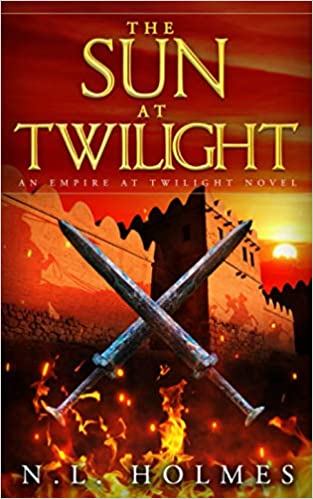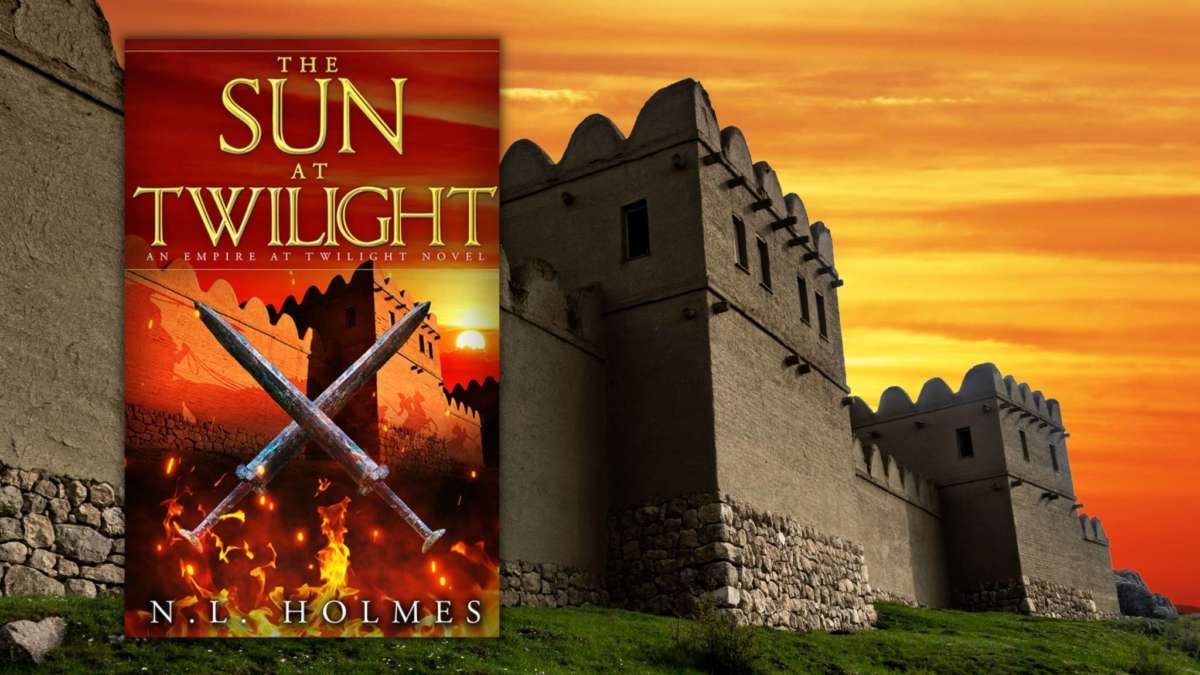The Sun at Twilight
What's It About?
“Tashmi-sharrumma had never felt that he fit into this family of men of stone … Yet it was he the gods had chosen. He was as mystified by their choice as anyone.”The Hittite Empire, 1230s BCE. Hattushili III has died, leaving his heir and first-rank son, Tashmi-sharrumma, to take his place as “emperor of all the lands that called Hatti their master.” The transition from tuhkanti (crown prince) to the Great King Tudhaliya IV, however, doesn’t come without its challenges in N.L. Holmes’ historical saga The Sun at Twilight, the latest addition to her Empire at Twilight series.
First, there is his legitimacy. As the son of a usurper, Tash questions his place as ruler and worries that his father’s sins have earned him the gods’ displeasure. Still, despite his father’s questionable seizure of the throne, Tash knows he was a great king, and all he wants is to live up to Hattushili’s legacy. Then, there is his cousin Kurunta, brother of the king who Hattushili displaced. He’s also Tash’s dearest friend and lover, but with so many rules surrounding his new position as king, Tash doubts they can carry on the intimate relationship that first blossomed in their youth.
THE HEART OF A MAN, THE HEAD OF A KING
As a man, Tash longs for Kurunta, the “soul mate who would listen to his most intimate thoughts without mocking,” but as a king determined to uphold the traditions of the empire, “the most intimate details of his life were the object of public scrutiny.” A relationship such as this is taboo, and although his position as king would allow him to conduct himself in whatever manner he likes, how could he pass judgment on others for the same indiscretion? So, he must continue to keep Kurunta at arm’s length, no matter how much it hurts them both.
As if questioning his legitimacy and battling the war in his heart didn’t make shepherding Hatti Land difficult enough, Tash must also contend with the strong opinions of those around him. The fiercest being that of Puduhepa, his tawananna (queen) and also his mother, who, having had the power to make decisions for the kingdom while her late husband was ill, has become a little too comfortable overstepping the bounds dictated by her own office. Tash must also deal with his older brothers, many of whom wish Tash ruled more forcefully and would abandon his stubborn commitment to mercy, but Tash never wavers in his belief that “in the land beloved by the thousand gods, clemency was queen of virtues, consort of justice.”
Try as he might to be the virtuous and just king he believes Hatti Land deserves, there are plots at work that threaten his rule — some newly brewed and others concocted decades ago that are only just reaching their boiling point.
HISTORICAL FICTION AS MYSTIFYING AS FANTASY
Leave it to an actual archeologist to unearth an ancient story so epic and mystifying the reader might mistake it for fantasy. In The Sun at Twilight, Holmes doesn’t build a world, she reconstructs one, carefully piecing together what few remnants exist of a time nearly two millennia removed from our own. Such a feat requires the imagination of a deft writer to fill in the blanks.
Oddly enough, it was an exercise in “filling in the blanks” that led Holmes to this Bronze Age novel and its siblings. Using only the sole few documents available on royal divorce in Ugarit in the 13th century BCE, she and her students attempted to explain what happened, but Holmes said, “It quickly became apparent that almost anything we might come up with was as much fiction as historiography!” Although this is the fourth book in Holmes’ Empire at Twilight series, the stories in each novel stand on their own, and the reader can dive in right here.
This book has something for everyone: action, political intrigue, military and diplomatic strategy, romance, secrets and schemes, betrayal, the list goes on. Holmes’ writing is lush and, at times, lyrical. Her characters are well-defined and interesting. In a genre wholly ruled by tales from the current era if not 20th-century stories alone, The Sun at Twilight is a breath of fresh air.
RELATED POSTS
A Love Story for the Ages: 8 LGBTQ+ Historical Fiction Books
A.J. Cullen’s Debut “Arrian’s Lion” Roars With Depth of Meaning





